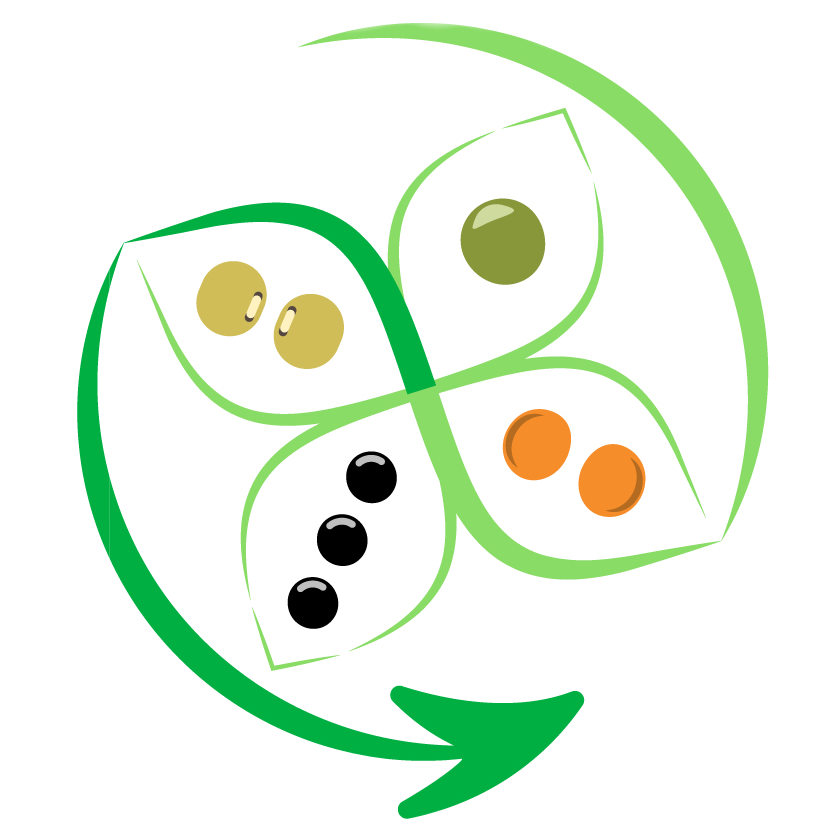B vitamin quantification in wild and cultivated lentil seed tissues using ultra-performance liquid chromatography-selected reaction monitoring mass spectrometry
Characterize the nutritional and food functionality characteristics of lentil to understand their B vitamin profile. Specifically, parental material of our recombinant imbred line (RIL) and nested association mapping (NAM) populations.
Develop a robust protocol for characterizing B vitamins in lentil seeds using ultra-performance liquid chromatography-selected reaction monitoring mass spectrometry (UPLC/MRM MS).
Utilize existing genotypic datasets to perform QTL analysis and look for trait-associated genetic markers for use in the breeding program for genetic improvement of B vitamin levels in lentil.
Germplasm
| Germplasm Genus |
Lens
|
|---|---|
| Germplasm Scientific Name |
|
| Germplasm Collection |
|
B vitamins are important for human health and are often enriched in processed foods such as wheat flour. Pulses have been identified as being a good source of key B vitamins such as folate (B9) and pyridoxine (B6). Studies have shown that lentils have a higher content relative to other pulses. This study characterizes nutritional and food functionality characteristics of lentil to understand their B vitamin profile. Understanding the B vitamin profile of lentils requires a series of robust analytical methods. We have developed an optimized quantification method for folate in lentils and will develop a LC-MS method that includes the others (B1: thiamine; B2: riboflavin and riboflavin-5-monophosphate; B3: nicotinamide and nicotinic acid; B5: pantothenic acid; B6: pyridoxine, pyridoxamine and pyridoxal; B7: biotin) under this study. Then we will use this method to further characterize folate and other B vitamins in seeds of cultivated and wild parents of available RIL and NAM populations grown in the field in 2020 and 2021. Seed of a population derived from parents with contrasting levels of B-vitamins will be harvested from a field trial grown in a minimum of two locations for two years. Genotypic information is available, facilitating QTL analyses. The baseline information on variation and QTL-derived markers will allow the breeder to develop a strategy for genetic improvement of B vitamin levels in lentil.
Attribution
| Data Custodian |
|
|---|---|
| Collaborator |
Jeremy Marshall
|
| Data Curator |
|
| Research Organization |
Experiments
Characterize the nutritional and food functionality characteristics of a diverse set of lentil germplasm to understand their B vitamin profile.
Associated Datasets
LDP B Vitamin Concentration Dataset (XLSX, TSV)
This data consists of the concentration (ug B vitamin per gram dry weight of initial powdered sample) for seven B vitamins. Samples consist of 2 site-years, 6 Lentil genotypes and either seed coat or cotyledons. In 2018 the samples were per field plot but in 2020 the field plots per genotype were pooled into a single sample. The B vitamins were measured using ultra-performance liquid chromatography-selected reaction monitoring mass spectrometry (UPLC-SRM MS).
Characterize the B vitamin profile of the LR-70 recombinant imbred lines using UPLC/MRM MS.
Utilize existing genotypic datasets to perform QTL analysis and look for trait-associated genetic markers for use in the breeding program for genetic improvement of B vitamin levels in lentil.
Associated Datasets
LR-70 B Vitamin Concentration Dataset (XLSX, TSV)
This data consists of the concentration (ug B vitamin per gram dry weight of initial powdered sample) for seven B vitamins. Samples consist of 2 site-years, 110 recombinant inbred lines and either whole seed or cotyledons. In Sutherland the samples were per field plot but in Aberdeen the field plots per genotype were pooled into a single sample. The B vitamins were measured using ultra-performance liquid chromatography-selected reaction monitoring mass spectrometry (UPLC-SRM MS).
Characterize the B vitamin profile of the LR-93 recombinant imbred lines using UPLC/MRM MS.
Utilize existing genotypic datasets to perform QTL analysis and look for trait-associated genetic markers for use in the breeding program for genetic improvement of B vitamin levels in lentil.
Associated Datasets
LR-93 (NAM-2) B Vitamin Concentration Dataset (XLSX, TSV)
This data consists of the concentration (ug B vitamin per gram dry weight of initial powdered sample) for seven B vitamins. Samples consist of 1 site-year, 98 recombinant inbred lines and either whole seed or cotyledons. The field plots per genotype were pooled into a single composite sample. The B vitamins were measured using ultra-performance liquid chromatography-selected reaction monitoring mass spectrometry (UPLC-SRM MS).
LR-93 (NAM-2) Field Phenology Dataset (XLSX, TSV)
This data consists of phenology measurements for the plots eventually harvested for B vitamin quantification. Specifically, emergence, flowering time and maturity dates/days are recorded. Additionally, opportunistic root rot measurements were taken.

